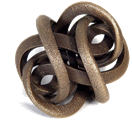Annotation:This is not My Own House
X:0 T:This is no mine ain House M:C| L:1/8 R:Air B:William Thomson - Orpheus Caledonius, vol. II (1733, No. 32, p. 129) B: https://digital.nls.uk/special-collections-of-printed-music/archive/91482038 N:Thomson (c. 1695-1753) was a Scottish singer and folk song collector N:who lived in London for most of his adult career. Z:AK/Fiddler's Companion K:D V:1 clef=treble name="0." [V:1] D|F A A>d {de}f2 e d |dB A F =c E E A|F A A d fa e f |d<B A F A D D || D|F A A B/c/ d/c/ B/A/ d F|G B A F E E =c E|FA A B/c/ d/c/ B/A/ d F|G E A F D<D D||
THIS IS NO MY AIN HOUSE. AKA and see "Colonel David Stewart of Garth's Reel," "This is No My Ain Lassie (2)." Scottish, Shetland; Reel or ("Very Slow" {Gow}) Strathspey. Shetland, Whalsay. D Major (Aird, Athole, Emmerson, Kerr): C Major (Dick, Emmerson, Thomson). Standard tuning (fiddle). AAB (most versions): AABB’ (Aird). The reel is an old one, a version of which appears in the Blaikie MS of 1692 as "[[Abbeyhills Rant]"[1]. Bonnie Prince Charlie danced to this tune at the house of Lude, near Blair, before the battle of Prestonpans, 1745 {he won that one} (Marshall monogram, 1845 Collection, and Winstock 1970). Country dance directions to the tune were recovered from the Holmain Manuscript from Dumfries-shire (c. 1710-1750). The earliest record of the melody under the "ain/own house" title (which may be seen as a set of "De'il Stick the Minister (2)," is from David Young's Duke of Perth Manuscript (AKA the Drummond Castle Manuscript) of 1734 (where it is listed as a country dance), and Thomson's Orpheus Caledonius, vol. 2, 1733. Gow published it twice, the second time in Sixth Collection, 1822, under the title "Colonel David Stewart of Garth's Reel," and it appears in James Aird's 1782 collection. It is now played as a strathspey in Scotland, as Gow set it in his First Collection' (1784—-and included the note: “This Tune may be played very Slow”). Related melodies include "This is not my ain Lassie" and "Sean Triubhas (1)." Cooke (1986) prints the following text to this dance tune, collected in the Shetland Islands:
This is no me ain hoose
I ken by the tickin o it
Bread and butter were my door's cheeks
And pancakes were the tickin o it.
The couplet is very similar one in “This is no my ain house” printed in G.S. MacQuoid’s Jacobite Songs and Ballads, an allegory for feelings of displacement after the failure of the Jacobite rebellion. Poet Allan Ramsay (1686-1758) recast “This is no my ain house” as a love song, which goes:
This is no my ain house,
I ken by the rigging o’t;
Since with my love I’ve changed my vows,
I dinna like the bigging o’t:
For now that I’m young Robie’s bride,
And mistress of his fire-side,
Mine ain house I’ll like to guide,
And please me with the trigging o’t.
Then farewell to my father’s house,
I gang where love invites me;
The strictest duty this allows,
When love with honour meets me.
When Hymen moulds us into ane,
My Robie’s nearer than my kin,
And to refuse him were a sin,
Sae lang’s he kindly treats me.
When I’m in mine ain house,
True love shall be a hand ay,
To make me still a prudent spouse,
And let my man command ay;
Avoiding ilka cause of strife,
The common pest of married life,
That makes ane wearied of his wife,
And breaks the kindly band ay.
All these versions were probably predated by a children’s song with the title “This is no my ain house.” Antiquarian William Stenhouse, writing in Illustrations to the Scots Musical Museum (No. 237), indicates it is an “old nursery ditty” from which Ramsay borrowed a line or two for the inspiration for his poem.
Compare also "This is no my ain house" with the first strain of "Niel Gow's Recovery."
- ↑ as per James C. Dick, "The Songs of Robert Burns", London, 1903, No. 96.
